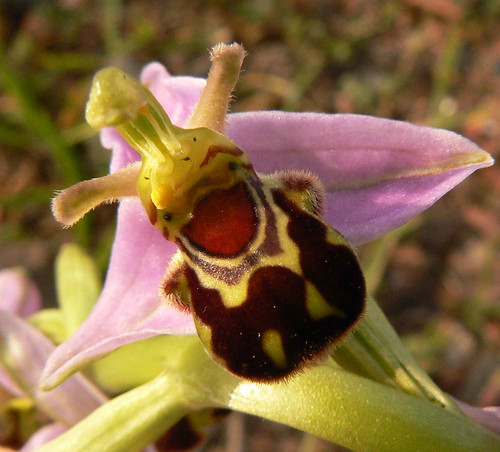 To resolve a dispute over a plant's identity for the benefit of the common wealth, I selflessly approached the roundhead of the Sugarloaf again.
To resolve a dispute over a plant's identity for the benefit of the common wealth, I selflessly approached the roundhead of the Sugarloaf again. I had failed to record the plant's qualities objectively, just taking a couple of poor photographs. So this time, I took more poor photographs. First, I made sure it was not an olive* then approached the plant more scientifically.
I had failed to record the plant's qualities objectively, just taking a couple of poor photographs. So this time, I took more poor photographs. First, I made sure it was not an olive* then approached the plant more scientifically. At 18" (½m) tall, it has about ten separate stems rising from the ground, and a number of dry brown sticks that were presumably last year's growth, indicating that it is an annual, not a perennial.
At 18" (½m) tall, it has about ten separate stems rising from the ground, and a number of dry brown sticks that were presumably last year's growth, indicating that it is an annual, not a perennial.Each stem throws off numerous short side shoots which have sets of leaves with nutlets at their base. Stems and leaves are lightish green, rough and hairy; the leaves oval to pointed with a clear vein, and the flowers (when present) occur at the tips of each stem.
This time, however, it had not even one of its puritanical white flowers, but the ironsided nutlets were clearly greenie-brown, not white as in common gromwell. So I conclude that it is indeed Corn or Field Gromwell, which not only has two God's English names but two papist Latin ones - Buglossoides arvensis and Lithospermum arvense.
 Common gromwell 'officinale' apparently has contraceptive qualities, so could be called the Lord's protector.
Common gromwell 'officinale' apparently has contraceptive qualities, so could be called the Lord's protector.Corn/field gromwell has, of course, seriously reduced in numbers as it is a crop pest, and so suffers from herbicides, insecticides and regicides.
 The path down was the short direct one, near-vertical, which is of course to my liking. The heat of the English summer's day was searing, with temperatures approaching 20 degrees.........
The path down was the short direct one, near-vertical, which is of course to my liking. The heat of the English summer's day was searing, with temperatures approaching 20 degrees.........























































